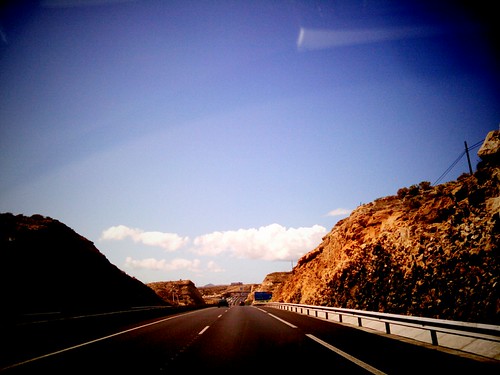A Guide To Spanish Motorway Tolls
June 22, 2012 by Travel Guide Costa Blanca
Filed under Travel Guide
Motorways in Spain are among the best in Europe. Roads are generally well maintained and have excellent signage to guide you on your travels, especially if you are visiting from abroad and hire a car on arrival in Spain to explore the country. Spanish motorways are also among the most costly in Europe to use because of expensive tolls on certain routes.
Travelling by road in Spain can be expensive, especially on Spain’s fastest routes. You will find tolls, or peages in Spanish, along autopistas. For fast routes similar to the autopistas but without tolls, look for routes labelled “autovia”. While speed limits for cars are generally 120 kilometres per hour or 75 miles per hour on autopistas, the speed limit on autovias is 100 kilometres per hour or 62 miles per hour. You can typically determine whether a motorway has a toll by the letters before the number of the road. Generally, any road with an A is a free motorway, or autovia. Motorways with tolls have an AP prefix. However, some sections of motorways with an A prefix that have tolls, particularly sections close to major cities. The C16, C32, E9, M12, R2 and R5 are also toll routes.
The more you travel on Spain’s autopistas, the more expensive it is since tolls are calculated per kilometre. Tolls vary greatly from region to region and are more expensive during summer months. On some motorways, especially around cities, short distances are charged a flat or fixed rate. Some of the most expensive tolls are found in Catalonia, including on the AP7 motorway along the south coast of Spain between Barcelona and Alicante. The AP69 from Bilbao to Zaragoza is also among the most expensive toll motorways in the country.
Using toll motorways in Spain is a straightforward exercise. You can pick up a ticket from a toll booth as you drive on to a motorway. When you are approaching a toll booth, you will see a sign with a red circle surrounding “Peaje” and “Toll” in black letters on a white background. Once at the entry station, you can obtain a ticket by pressing a small knob at an automatic machine. When you are exiting the motorway, you can hand your ticket to a booth attendant at the exit who will calculate the amount you must pay based on your distance travelled. You can pay tolls in cash or with a credit card. Lanes marked “tarjetas” have automated machines for credit cards, while lanes labelled “manual” have an attendant to process your ticket. When approaching a toll both, do not use the lanes labelled “telepeaje”, “VIA-T” or “T”. These lanes is reserved for drivers who have subscribed to a credit system where a chip is placed on the vehicle’s windscreen.
Planning out your route in advance can help you save money and avoid costly tolls when driving in Spain. Although driving on non-toll motorways can save you money, toll motorways are often less congested and help you arrive at your destination quicker thanks to fewer cars and higher speed limits. If you do use toll roads, they should not be feared. Tolls are easy to use and routes are well maintained with service stations at regular intervals. Deciding where to go in Spain will be the more difficult task!
